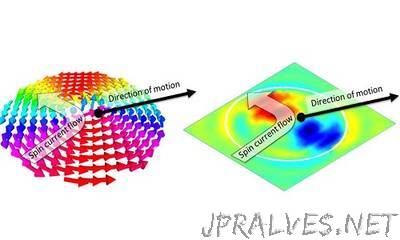
“Swirling objects known as magnetic vortices and skyrmions can be miniaturized without sacrificing mobility, a KAUST-led international research team has found. These findings are relevant for future “race-track” memory technologies that feature massive densities of moveable magnetic bits. In nanometer-thin magnetic films, such as iron-nickel alloys, the region separating two magnetic domains or defects can adopt tiny whirlpool-like patterns. Some of these patterns, called skyrmions, resist unraveling even when packed tightly together, and they can also be directed with small electric currents. These features have made the skyrmions attractive targets for research into high-capacity memory devices. One concept zips skyrmions around a loop then past a stationary read/write head to eliminate the need for mechanical components used in today’s hard drives. Aurelien Manchon, an Associate Professor of Material Science and Engineering at the University, notes that one of the main reasons for the appeal of skyrmions is their ability to avoid defects or uneven patches in thin films that would normally trap or “pin” a magnetic charge. However, this agility is compromised when researchers try to shrink skyrmions to the smallest size possible—the smaller they get the more likely they are to get pinned because of the relative increase in defect site dimensions.”
